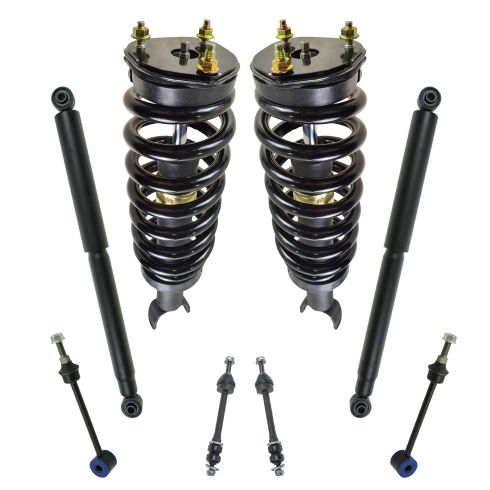Replaces
2006-07 Dodge Ram 1500 Front & Rear 8 Piece Suspension Kit TRQ SKA67248
Similar Items
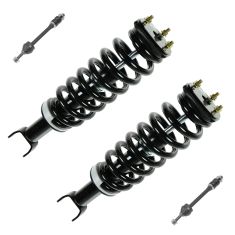
Replaces 2006-08 Dodge Ram 1500 Front 4 Piece Suspension Kit TRQ PSA56289
$214.95
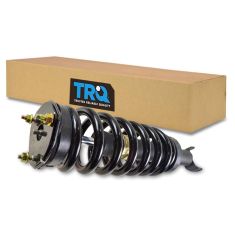
Replaces 2006-08 Dodge Ram 1500 Front Strut & Spring Assembly TRQ SCA57534
$129.95
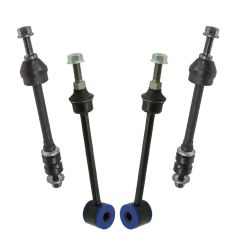
Replaces 2006-07 Dodge Ram 1500 Front & Rear 4 Piece Sway Bar Link Set TRQ PSA65856
$59.95
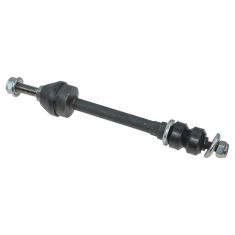
Replaces Dodge Ram Front Sway Bar Link TRQ PSA67773
$34.95
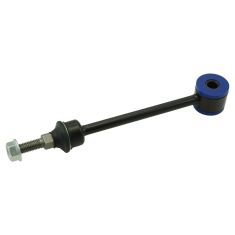
Replaces Dodge Ram 1500 2500 3500 Rear Sway Bar Link TRQ PSA67995
$29.95
Part Details
- (2) Front Sway Bar Links
- (2) Rear Sway Bar Links
- (2) Front Strut & Spring Assemblies
- (2) Rear Shock Absorbers
- 8 Piece
About TRQ:
TRQ is a trusted brand dedicated to making every repair a success story by combining premium parts with easy installation. Each TRQ part is engineered by a team of automotive experts to meet or exceed OEM standards, delivering enhanced performance and maximum longevity. With rigorous in-house testing, the brand ensures superior fit and function across every product line. TRQ also provides customers with best-in-class, step-by-step installation videos—so you can complete repairs with confidence, whether you're a first-time DIYer or an industry professional.
Product Features
TRQ suspension kits are manufactured using premium raw materials and coatings for extended service life. Each TRQ suspension component is designed to be a direct, maintenance-free replacement to the stock unit. To extend the life of your steering and suspension components, TRQ recommends replacing components in pairs, sets, or kits. All products are fit and road-tested in our Massachusetts R&D facility to ensure we deliver on our promise of Trusted Reliable Quality.
Our direct fit gas-charged shock absorbers help restore your vehicle's handling and ride quality to just like new.
Replacing struts used to require specialized tools to compress, remove, and transfer the old spring and mount. Our Pre-assembled, complete strut & spring assemblies come with all new parts and make the job much quicker and easier for the do-it-yourself mechanic.
Strut & spring assembly contains:
- Upper Strut Mount
- Strut Bearing
- Coil Spring
- Boot & Bumper Kit
- Gas-charged Strut
Our steering and suspension components are pre-greased and sealed for long life and do not require the extra maintenance typically required by greaseable versions.
Attention California Customers:
![]() WARNING: This product can expose you to chemicals including Chromium (Hexavalent Compounds), which is known to the State of California to cause cancer, and birth defects or other reproductive harm. For more information, go to www.P65Warnings.ca.gov
WARNING: This product can expose you to chemicals including Chromium (Hexavalent Compounds), which is known to the State of California to cause cancer, and birth defects or other reproductive harm. For more information, go to www.P65Warnings.ca.gov
Lifetime Warranty
This item is backed by our limited lifetime warranty. In the event that this item should fail due to manufacturing defects during intended use, we will replace the part free of charge. This warranty covers the cost of the part only.
FREE Shipping is standard on orders shipped to the lower 48 States (Contiguous United States). Standard shipping charges apply to Hawaii and Alaska.
Shipping is not available to a P.O. Box, APO/FPO/DPO addresses, US Territories, or Canada for this item.
Expedited is available on checkout to the United States, excluding Alaska, Hawaii.
Final shipping costs are available at checkout.





Created on:
Tools used
- Raise and secure the vehicle on jack stands Shoot the threads with rust penetrant Hold the 15mm hex with a 15mm wrench Remove the bolt from the top with a 17mm deep socket and ratchet Insert an 18mm wrench onto the bottom hex bolt Remove the 18mm nut with an 18mm six-point socket and ratchet Remove the lower nut Repeat the process for the opposite lower end Push your sway bar up and remove the links If the sway bar won't budge, loosen the bracket bolts Pull the sway bar up Remove the top nut on the opposite side Remove the opposite sway bar link
- Remove the nut, washer, and rubber bumper from the top Insert the sway bar links into place Hand-tighten the nut, washer and bumper on both sides for the top Push the sway bar into place Insert the sway bar end links into the control arms Loosely install the nuts on the bottom of the sway bar end links Insert a 15mm wrench to the hex nut Tighten the 16mm nut on the top Insert an 18mm wrench into the hex nut Tighten the 18mm nut to the bottom Repeat these steps on the opposite side Tighten any sway bar bushing bolts if you loosened them Torque the sway bar bushing bolts to 45 foot-pounds Lower the vehicle to the ground
Brought to you by 1AAuto.com, your source for quality replacement parts and the best service on the Internet.
Hi, I'm Mike from 1A Auto. I hope this how-to video helps you out, and next time you need parts for your vehicle, think of 1AAuto.com. Thanks.
In this video we're going to show you how to replace the sway bar end links on this 2008 Dodge Ram. Typically, you want to replace them in pairs. These are the tools that you're going to need: rust penetrant, 15mm, 16mm, 17mm, 18mm sockets, ratchet, socket extension, locking pliers, torque wrench, jack and jack stands
Raise and support your vehicle. You can do it with jack stands, but in this case we have a lift so we're going to use the lift. In the front end of the truck you can see that your sway bar end link is right here. We're going to start by shooting the threads with some rust penetrant so that it makes our whole job a whole lot easier.
To remove the sway bar end link, you're actually going to have to rotate the sway bar up. To do that, you have to disconnect the opposite side sway bar end link. If you're going to just be replacing one of the sway bar end links, then you just need to disconnect the bottom of the other side, but if you're going to be replacing both like us, and we recommend replacing both at the same time, you're going to want to lubricate the top and the bottom with the penetrating oil.
You'll see that the sway bar end link has a 15mm hex on the bottom side of it so that you can hold it with a wrench. Then on the top you're going to need a 17mm deep socket and ratchet. The bottom end of the sway bar end link has an 18mm spot for a wrench on it. You can wedge it in between the wheel. The bottom side is an 18mm 6-point. Now you can take the nut right off the bottom. We're going to be replacing both of the sway bar end links, but if you're just doing one, you need to disconnect the opposite side, the bottom of it. The 18mm wrench that we were hoping to use didn't fit in this scenario, so we went right to the locking pliers.
With an 18mm socket on the bottom, you should be able to loosen it right up. Then you can pop the nut right off the bottom. Now we need to raise up the sway bar so that we can pull the sway bar end links out. Unfortunately, we just put brand new bushings in here, so the sway bar is really tight, and it's tough to push up. We're going to start by loosening up the sway bar bushing brackets. You don't have to take all the bolts out. We just need to loosen them up so that the sway bar will move a little freer.
Now we're going to push the sway bar up on this side so that we can come over here and remove the sway bar end link from the sway bar. We're going to be replacing both of the sway bar end links, so the next thing that we do is rotate the sway bar like this. You haven't easier access to this upper nut on the sway bar end link. You can put a 15mm here, 17mm socket on the top, and loosen it up.
This right here is a 1ASSL00405. This is also an aftermarket piece; it's actually been replaced before on the truck. You can see that they're obviously very similar. Ours has the new bushings and washers, and nuts, along with the grease fitting included. The only difference between these two that I can come up with is these points right here, where you put the wrench on to remove them. It's just 18mm versus 19mm. It's going to fit just like the original one does and hopefully solve your problem.
Get your 1A Auto sway bar end link, and take the nut and the washer and the rubber bumper off the top, leaving one rubber bumper and the washer on there. Slide it through your sway bar. Then put the nut on, but leave it really use so that we can actually slide it down into the control arm later. We're going to repeat this step on the opposite side. We're now going to spin the sway bar up, and set the sway bar end links down through the control arms. Then we'll loosely install the nuts on the bottom of the sway bar end links.
We're going to start by tightening up the top of the sway bar end link with a 15mm wrench right in here and a 16mm socket and ratchet on the top. Just snug it up. Then we'll move to the bottom. We'll take a 19mm wrench, slide it right over here, and an 18mm socket and ratchet for the bottom. Once it's tight, you'll want to repeat these steps on the opposite side.
Next, we're going to tighten up all of the sway bar bushings bolts that we had loosened earlier in the job. These we should set to 45 foot-pounds. With the sway bar bushings torqued and the sway bar end links replaced, now you can lower the truck back down to the ground and you'll be all set for the road ahead.
Thanks for tuning in. We hope this video helped you out. Next time you need parts for your car, please visit 1AAuto.com. Also check out our other helpful how-to and diagnosis videos.
Tools used
- Loosen the 22mm lug nuts with the vehicle on the ground Raise the vehicle with a floor jack Secure the vehicle on jack stands Remove the lug nuts Pull off the wheel
- Remove the bottom 21mm nut with a wrench and breaker bar from the shock Repeat the process for the upper 21mm nut with the wrench placed against the frame Remove the shock
- Insert the shock into the upper mount Insert the upper bolt into the shock Hand tighten the nut Line up the lower shock mount Insert the bolt into place on the bottom, making sure it doesn't fight Tighten the upper nut with a 21mm socket and wrench Torque the bolt to 100 foot-pounds Tighten the lower nut with a 21mm socket and wrench Torque the bolt to 100 foot-pounds
- Slide the wheel into place Start the lug nuts by hand Tighten the lug nuts preliminarily in a crossing or star pattern Lower the vehicle to the ground Tighten the lug nuts to 135 foot-pounds in a crossing or star pattern
Brought to you by 1AAuto.com, your source for quality replacement parts and the best service on the Internet.
Hi, I'm Mike from 1A Auto. I hope this how-to video helps you out, and next time you need parts for your vehicle, think of 1AAuto.com. Thanks.
In this video, we're going to show you how to replace the rear shock absorbers in a 2008 Dodge Ram pickup. This is for non-mega cab trucks. The items you're going to need for this repair include a pair of rear shocks from 1AAuto.com, we do recommend you do these the same way we do the struts or any other suspension component, replacing in pairs, and you'll need a 21mm and a 22mm deep socket, some extensions, a ratchet, a breaker bar, a 21mm wrench, and a torque wrench. You're also going to want a jack and a set of jack stands.
With the vehicle on the ground, using a 22mm socket and breaker bar, break the lug nuts for your wheel loose. These chrome lug nuts tend to be swollen, so make sure your socket's on there good. Once your lug nuts are loose, raise and support the vehicle with the jack and jack stands. This wheel and tire assembly, being a big off-road tire and 20 inch wheel, it's going to be real heavy, so we're only going to bring it up a little bit when we take it off. Remove the wheel and tire from the hub.
Remove the bottom bolt for the rear shock using a 21mm wrench, a 21mm socket, and breaker bar. After you break the nut loose, you can switch to a ratchet. Remove the bottom bolt. Sometimes if they get really stuck on there, you can rotate the ratchet up and just hold it against the bottom of the axle so you don't have to strain your other hand to hold the bolt steady. Remove the nut and push the bolt through.
Use your 21mm wrench to hold the nut on the back side of the upper shock bolt. Using a 21mm socket and extension and a breaker bar, we're going to brace the wrench against the bottom of the bed there. After we've broken the bolt loose, we'll switch over to a ratchet to get it out faster. Remove the nut on the back first, support the shock, remove the upper bolt, and remove the shock from the vehicle.
Here we have our old part that we removed from our vehicle. This is an aftermarket replacement, this is not the OEM part that we took out. Here we have our new part from 1AAuto.com. These come shipped with this little band on them to keep them compressed, which makes them smaller and easier to package. All you have to do is push down, remove that, what you'll see is exactly the same as our old part.
Reinstall the top of the shock into the upper mount. Send your bolt through, and start the nut on the back. Before tightening, we'll also line up our lower shock mount, setting that bolt as well. It may help if you spin it a little with a ratchet to help center everything up nicely. Be sure that it's not fighting, or that means that it could be bound up against a thread and strip out your bolt. Start that nut as well. Support the nut on the back of your upper shock with a 21mm wrench. Use that socket ratchet and extension to tighten up the bolt.
If you've rested the wrench against the frame to support it while you tighten up with the socket and ratchet, you want to lift that up and hold it now so it doesn't get locked against there, and torque to 100 foot-pounds. Tighten up the bottom bolt with the same socket, ratchet, and wrench. Torque to 100 foot-pounds.
Start your lug nuts by hand. Tighten the lugs as far as you can. Remember to bring the wheel down evenly and always tighten in a cross pattern. Once the lugs are as tight as you can get them with the tire in the air, put partial weight of the vehicle on the ground by lowering it off your jack stands. Torque your lug nuts to 135 foot-pounds in a cross pattern.
Thanks for tuning in. We hope this video helped you out. Next time you need parts for your car, please visit 1AAuto.com. Also check out our other helpful how-to and diagnosis videos.
Tools used
- Jack up the truck (optional). Spray penetrating oil on the bolts of both shocks. Use two 21mm sockets with a breaker bar or pipe for leverage on the bolt at the bottom of the shock. Do NOT remove the bolt yet. Just the nut. Remove the nut from the top bolt. Carefully remove the bottom bolt, then the top bolt and pull the shock free.
- Put the new shock into place. Put the top bolt through and start the nut. Put the bottom bolt on and start the nut. Tighten the nuts to about 70 to 75 foot-pounds of torque.
Brought to you by 1AAuto.com, your source for quality replacements parts and the best service on the internet.
Hi, I'm Mike from 1A Auto. I hope this how-to video helps you out and next time you need parts for your vehicle, think of 1aauto.com. Thanks.
In this video we're going to show you how to replace the rear shocks on this 2002 GMC 2500. The only tools you'll need for this job are two 21mm wrenches either a large wrench or two sockets with a ratchet and a breaker bar.
You don't even have to raise the vehicle. You definitely don't have to take off the rear wheels. You don't even have to raise the vehicle you just need to secure it with blocks and you can actually just crawl underneath and replace the shocks without even lifting up the vehicle. Although lifting up the vehicle does make it a little easier.
You can see I got the truck on the lift. I also got the rear end supportive. You basically want to jack your truck up. The best place to jack your truck up is here and then you can put a safety jack stand under here on each side or you can actually put safety stands right underneath the axle tubes right here, that's probably the best place then put all the weight on the axle.
I have it supported here for two reasons, for safety and also pushing up on the axle a little bit contracts the shocks some which takes some of the pressure off of them. Basically when you have all the weight off of the axle or the axle hanging down, the shocks are actually what's holding it up. You don't want to have the axle hanging down and then just crank the shocks because then your rear end is going to fall down further.
Start by spraying penetrating oil on the bolts, this side and the other side. We're going to replace both shocks at once. Always replace shocks in pairs. Working on this little bolt first, you got to want either a breaker bar, 21mm socket. You can also use a ratchet with a pipe on it. That gives you some extra leverage. I'll use the breaker bar here and get this on the right way. It seems to come apart pretty easily. Swap the pipe around. I'll speed it up here. I take the nut off but I don't remove the bolt from the shock yet. Hope for the same results. Bolt's turning.
Here again I'll just speed it up as I'm working those wrenches and removing the nut from the end of the bolt.
Going back down here. At this step if you got the rear end, if you actually are working on the ground you can do this without even jack and jack stands. At this point be very careful, as you pull this bolt out the shock may want to go down.
Mine are in pretty rough shape. We're not even doing much still the bolt has come right out.
Just for reference, here's my old shock. If you press it down. It pretty much stays down. On the new shock, you can see it has band on it. If you press it down it actually slowly comes up.
I pull my old shock up. You can see I can just press right down and it just takes a whole lot more force on the new shock.
With the new shock, put it up there in place. You put the bolt through and the spot on the nut. Now swing this into place, and on.
From here on out I'm just going to use fast forward. Use your breaker bar and your ratchet to tighten them up. Basically tighten them up as tight as you can with that ratchet. That's good. These bolts should be probably torqued to about 70 to 75 foot-pounds. Once you have them all tighten up, obviously replace the other side. Your car would be riding smoother down the road.
We hope this helps you out. Brought to you by www.1AAuto.com, your source for quality replacement parts and the best service on the internet. Please feel free to call us toll free 888-844-3393. We're the company that's here for you on the internet and in person.
Tools used
- Loosen the 22mm lug nuts with the vehicle on the ground Pry off the center cap with a pick Loosen the axle nut with a 35mm socket and breaker bar Raise the vehicle with a floor jack Secure the vehicle on jack stands Remove the lug nuts Pull off the wheel
- Remove the bottom bolt from the strut with a 24mm socket and a 21mm wrench Leave the nut even on the end of the bolt Hammer the bolt out with a hammer Tap the end of the stud without damaging it to remove the bolt When the bolt has pushed out far enough, remove it with a 21mm socket and three or more wrenches to the bolt Have an assistant turn down the control arm while you remove the bolt Remove the three nuts on the top of the strut with a 15mm wrench Remove the two 21mm bolts securing the caliper bracket to the spindle Secure the caliper with a bungee chord Remove the rotor Loosen the bottom of the upper ball joint with a 22mm wrench Remove the nut Carefully hammer the knuckle to remove the ball joint Hold the hub still with a pry bar Remove the 35mm axle nut Disconnect the wheel speed sensor connector Pry off the sensor connectors from the control arm Remove the sway bar with an 18mm wrench on the hex and an 18mm socket and ratchet to remove the nut on the bottom Knock the CV axle out of the hub with a hammer Pry the lower control arm down and out of the sway bar Push down on the spindle and pull the spring assembly down and out
- Remove the three 15mm nuts from the leveling spacer on the old strut assembly Transfer the leveling spacer to the new assembly Torque the 15mm nuts to 45 foot-pounds Insert the strut into place Align the bolts on the top of the strut mount into the frame Tighten 15mm nuts on the top of the strut Torque the nuts to 45 foot-pounds Insert the bottom of the sway bar link into the control arm Hand tighten the lower nut Hold the joint with a 15mm wrench Tighten the 15mm nut with a socket and ratchet Insert a pry bar into the slot on the lower control arm and pry the strut over the bushing Hammer a punch into the strut and bolt hole Line up the strut to the bolt hole with the punch Hammer the bolt into the bottom of the strut Hand-tighten the bolt, and do not fully tighten Line up the axle into the hub Hand tighten the 35mm axle nut Insert the upper ball joint into the spindle Tighten the 21mm ball joint nut Torque the upper control arm nut to 40 foot-pounds and add 90 degrees Insert the harness into the control arm Reconnect the harness Jack up underneath the control arm to put the load on the suspension Torque the strut bolt to 155 foot-pounds Release the suspension load Insert the rotor into place Insert the brake caliper onto the rotor Tighten the 21mm bolts to the caliper Torque the caliper bolts to 130 foot-pounds
- Slide the wheel into place Start the lug nuts by hand Tighten the lug nuts preliminarily Lower the vehicle to the ground Tighten the hub nut to 185 foot-pounds Replace the center cap Tighten the lug nuts to 135 foot-pounds in a crossing or star pattern
Brought to you by 1AAuto.com, your source for quality replacement parts and the best service on the Internet.
Hi, I'm Mike from 1A Auto. I hope this how-to video helps you out, and next time you need parts for your vehicle, think of 1AAuto.com. Thanks.
In this video, we're going to show you how to install the strut and spring assembly in this 2008 Dodge Ram 1500. We do this on the passenger side, but the driver side is the same procedure.
You'll need a new strut assembly from 1AAuto.com, 15 to 35 millimeter sockets, ratchet, extensions, and a breaker bar, along with the same size wrenches, a small pick, hammer, bungee cord or mechanics wire, pry bar, small flat blade screwdriver, a punch, torque wrench, and jack and jack stands.
With the vehicle on the ground, using a 22-millimeter socket and breaker bar, break the lug nuts for your wheel loose. These chrome lug nuts tend to be swollen, so make sure your socket's on there good. Using a small pick, remove the center cap from the wheel. Using a 35-millimeter socket and a breaker bar, crack the axle nut loose. Raise and support your vehicle, and finish removing the lug nuts. Remove the wheel and tire from the hub.
Using a 24 millimeter socket and a breaker bar on the nut, and the 21 millimeter wrench on the bolt on the other side of the control arm, remove the bottom bolt for the strut from the lower control arm. Leave the nut. Flush with the end of the bolt.
Using a hammer, carefully hit the end, making sure that the nut does not come farther in or out than the end of the bolt, as to avoid damaging either of them. When you get to the end and you know it's moving, you can let a few threads out. Once the bolt's far enough through that you can't have the nut threaded on any more carefully, tap the end of the stud here. Make sure that if it looks like it's mushrooming over, you stop.
I've stacked three wrenches together that are wider than the shank of the bolt, but narrower than the flange on the back of the head. I'm going to stack those between the bolt control arm, push out against the back of the nut with them, while we turn it out with a 21 millimeter socket and ratchet. You may have to add more wrenches to the stack as the bolt comes farther out.
We've now added a sixth wrench, and I have an assistant prying down the control arm while I turn the bolt out. Using a 15 millimeter wrench, remove the three nuts on the top of the strut. If you have a ratcheting wrench or very shallow ratchet, you could use that as well. It might actually be a little bit easier for you. Remove the two 21 millimeter bolts securing the caliper bracket to the spindle.
We're going to use a 21 millimeter socket and a breaker bar. Once you crack them loose, go ahead and switch to a ratchet. Remove the caliper and carrier assembly. Using a bungee cord, mechanics wire, or a zip tie, secure it off to the frame and out of the way. Remove the rotor. Place it off to the side. Using a 22 millimeter box end wrench bottom of the upper bolt joint and use another wrench locked in to the open end to break it loose. Remove it the rest of the way.
One of the ways to remove this upper bolt joint without damaging it is to use a hammer and hit the side of where the stud goes through to egg the hole out for a second, and allow it to pop out. Be careful not to hit it too hard because this is aluminum, and you can crack and break it much easier than a cast steel piece. You can also try using a pry bar to put some upward tension on the control arm. Brace the hub with a pry bar, and finish removing your axle nut.
Behind the fender liner is the wheel speed sensor connector. Using a small flat blade screwdriver, pop up on the red safety tab. Push in and remove the connector. Using a small flat blade screwdriver, unsnap the connectors from the harness under the control arm, allow the ABS sensor to hang. Remove the lower portion of the sway bar from the lower control arm. Ours has an 18-millimeter hex on the top side. If yours isn't there, you can use a pair of vise grips to hold this metal collar on the top side and an 18 millimeter socket and ratchet to remove the nut on the bottom. Using a punch in the center hole here on the CV axle, I'm going to go ahead and knock it out of the hub with a hammer.
Once the splines are free, we'll allow the upper control arm out of the spindle. Finish working the axle out. Using a pry bar bring the lower control arm down out of the sway bar, going to push down on the spindle while holding the strut up into the mount. Move the bottom off to the side and allow it to drop through.
Here we have our old part from the vehicle and our new part from 1AAuto.com. As you could see, we have the same strut mounts up top, same spring, same strut assembly, same amount at the bottom. The only thing that's different is that it's up top here. We have a spacer for the lift and level on our truck. That just means that it makes the front of the truck sit a little bit higher so we can clear those big wheels and tires. This simply unbolts, bolts over to our new quick strut assembly, and bolts right back into the vehicle. This means that our new part comes complete with the spring already installed under the new strut mount onto our new strut assembly.
Now you don't have to worry about the headache and high risk of using a spring compressor at home. Simply remove your old part, and install your new one, just like factory.
We've placed our strut spring assembly into a vise so we can remove the three 15 millimeter nuts holding our leveling spacer onto the strut assembly. Start all of the nuts. We don't have a socket that can get in here, but if you do, the torque spec for these is 45 foot-pounds. Reinstall the strut.
Line up the bolts on the strut mount into the frame. Tighten the nuts on the top of the strut mount. Again, if you can get a torque wrench in there, it's going to be 45 foot-pounds on these nuts as well. Reinstall the bottom of the sway bar link into the control arm. Start the nut on the bottom of the lower sway bar link joint, counter hold the base of the lower joint with an 18 millimeter wrench. Tighten the nut with an 18 millimeter socket and ratchet.
You'll notice in the next few shots that the sway bar length is not connected in the video, despite us having just shown you the step to install it. You should be able to install your sway bar link after you've installed the strut and upper control arms, but in our case our vehicle is lifted, and we went through a few steps before realizing we had the incorrect sway bar link, meaning we had to go back a few steps in order to install it.
We're inserting a pry bar into the slot of the lower control arm so we can pry the strut over to the bushing. Install the punch. Hammer the punch in to help line up. Line up the bolt hole by manipulating the punch. Once you're in a good ways and the threads are inside the sleeve and lined up, you may need a pry bar to help line the back of the strut up. Finish tapping the bolt through.
Start the nut by hand. Don't tighten the bolt fully until the load of the vehicle is on the suspension. Line up the splines on the axle. Put the splines in the hub. Once it's started, we're just going to install the axle nut by hand to keep it in place while we line up the rest of our suspension.
Reinstall the upper bolt joint into the spindle. Tighten it with a 22 millimeter socket and ratchet. Torque the upper control arm nut to 40 foot-pounds. Add an additional 90 degrees.
Reinstall the harness into the keepers on the bottom of the control arm. Reinstall the connector. Push down on the safety tab. We're going to use a screw jack to put load on the suspension because we're on a lift. If you're doing this from a jack and jack stands you can use a floor jack. Torque the bottom strut bolt to 155 foot-pounds. You can now release the load from your suspension.
Reinstall the rotor onto the hub. Make sure that you don't twist the line on your brake hose. Reinstall the caliper carrier assembly onto the rotor, and start the bolts on the back side. Tighten the bolts down with a 21 millimeter socket and ratchet. Torque the caliper bolts to 130 foot-pounds.
Reinstall your wheel and tire onto the vehicle. Start the lug nuts with a 22 millimeter socket. Get all the lug nuts as tight as you can in the air. Then lower the vehicle. After tightening your axle nut, torque it to 185 foot-pounds. Pop the center cap back into place. Torque your lug nuts to 135 foot-pounds in a cross pattern.
Thanks for tuning in. We hope this video helped you out. Next time you need parts for your car, please visit 1AAuto.com. Also check out our other helpful how-to and diagnosis videos.
877-844-3393
Monday - Friday 8:00am - 9:30pm ET
Saturday - Sunday 8:00am - 4:30pm ET
Specify your vehicle's year, make and model to guarantee fit.
This part doesn't fit a . Select from parts that fit.





